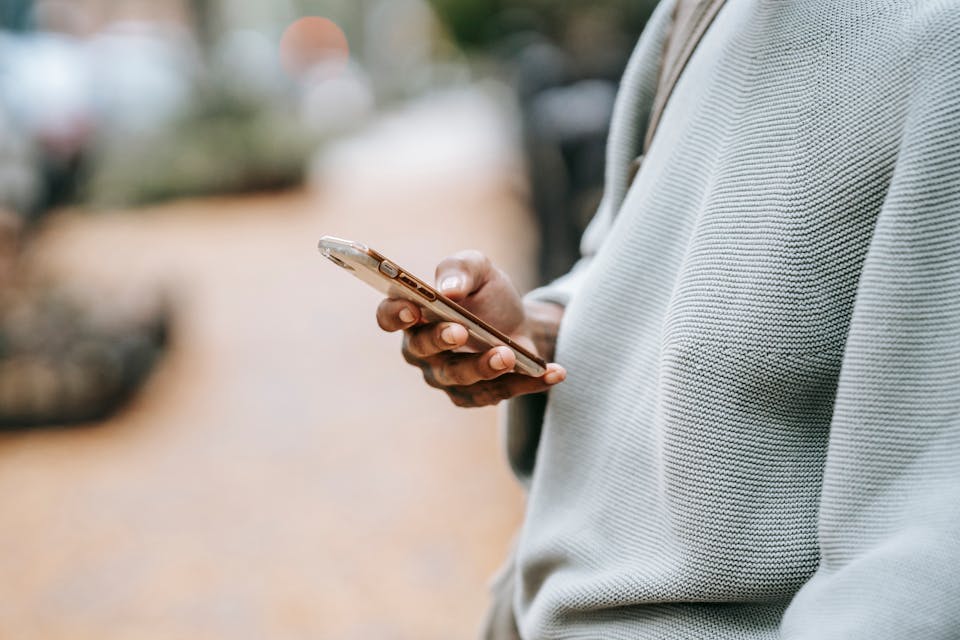A marketing campaign that wants high levels of social media engagement needs to take into account the times in which you post your content.
Why?
Creating informative and relevant content might find itself buried on all social media platforms if it is pushed out at the wrong time.
It’s important to post your content at relevant times to get ahead of the curve. Let’s try to break down when the best times to publish your content.
When is the Best Time to Post Content for Maximum Results?
So, when is the best time to post content?
This question often perplexes marketers and business owners. There’s no one-size-fits-all answer, and it’s certainly not about randomly picking any hour of the day and hitting ‘post.’
It’s far more complex than that. Finding the perfect time to post content requires consideration of several critical factors, including your target audience, their time zone, the social media platform you’re using, and even the type of content you share.
Let’s explore how to align your content schedule with your target audience’s preferences.
Identifying the Best Time to Post Content Based on Target Audience, Market, or Niche
We are reporting very broad times, and your niche might not fall within these generally recommended times.
If you think that your social media post timing will be more or less difficult for your industry, do more research on your specific niche.
Sprout Social recently completed a study on the best times to post to varying social media platforms. They provided users with industry-specific heat maps that show medium to high-level engagement, like this one below:

Identifying the Best Time to Post Content By Social Media Channel
If you are not posting to all social media channels, then you’ll want to account for these channels in your marketing strategy STAT.
While there are some growing outlier social media channels out there, it’s fine to establish yourself on the top four: LinkedIn, Instagram, Facebook, and Twitter.
There is no exact science to identifying when is the right time to post to a certain social media channel. However, you can take into consideration the numerous factors mentioned earlier, such as popular wake times per time zone, and the times in which your content is most regularly accessed.
If you’re unsure or unable to navigate this aspect of your content marketing management system, there are businesses out there that specialize in building positive social media relationships.
LinkedIn is social media for professionals. LinkedIn is by and large the first place outside of your own website that you should be generating content for.
According to Hubspot, there is an optimal time to post on LinkedIn:

Hubspot’s recommended time zones from Central Daylight Time (CDT or UTC -5), but these can easily be adjusted for your geographical or preferred time zone. CDT is five hours behind Coordinated Universal Time (UTC).
Posting between 3 PM and 5 PM CDT is around 4 PM and 6 PM EST, but it will be between 9 PM and 11 PM in England. Abiding by these times will mean that you are pushing content out for major global hubs like New York City and London, England. However, these might not work if you’re trying to market to a local audience.
Posting during these optimal times will also put you against high-traffic and competitive bids. If you’d like to market in a more unique way, then posting content around these times could lead to a unique and more personalized level of engagement.
As with all of your social media accounts, take advantage of the built-in analytics. LinkedIn analytics will provide data through user-profile interactions. This data is unique and will help tailor how and when your brand should be posting on LinkedIn.
Instagram may not be as popular for some businesses, but it is an actual goldmine for small businesses, creative hubs and people selling to unique audiences.
Instagram is also a place where people go to get away from the business-oriented networks of Facebook, Twitter and LinkedIn. In this way, posting on Instagram will be drastically different than the other channels, and publishing times are unique as well. This is why Instagram marketing is its own form of marketing.
Expertvoice argues that Instagram post timing differs by day:
- Sunday from 10:00 a.m. to 2:00 p.m.
- Monday from 11:00 a.m. to 5:00 p.m.
- Tuesday from 5:00 a.m., 9:00 a.m. to 6:00 p.m.
- Wednesday from 5:00 a.m.,11:00 a.m. and 3:00 p.m.
- Thursday from 5:00 a.m., 11:00 a.m. and 3:00 to 4:00 p.m.
- Friday from 5:00 a.m., 9:00 a.m. to 4:00 p.m.
- Saturday from 11:00 a.m.
These again are going to vary based on your marketing factors and also the times your audience engages with your content. The Instagram Insight Analytics provides necessary data of the way your own account works. You can even test out a variety of post timings by posting similar articles around similar or different times of the day.
If you’re worried that these times are too restricted, you can always opt for an Instagram automation like Automgrammer or HubSpot. With these apps you can schedule Instagram posts.
Instagram stories are another positive way to engage with followers. Some viewers prefer Instagram stories because they are able to see more content from an isolated poster.
Facebook or Meta
Knowing when you should be posting on Facebook can be a challenge in and of itself. Since Facebook is largely a friends-and-family social media channel, the mixture of business and advertising content can be disruptive.
As always, knowing when you should post your content should be based on your data and the content’s relevance. You can easily access your Facebook profile’s data with Facebook Insights to optimize when to publish your content.

As you can see, Facebook tracks the reach that each post garners and the level of engagement that it hits. Published times listed to the left allow you to categorize the level of engagement based on post times.
Once the ideal time to post has been identified, stay on top of the news feed and schedule Facebook posts.
Scheduling your posts will allow that they are seen during optimal hours. Who knows? Maybe a post will go viral.
Twitter or X
Twitter is admittedly one of the more difficult platforms to post for. Luckily, there are several apps and software specifically designed to automate your Twitter posts.
According to the American Marketing Association, Twitter posts will thrive depending on the date and hour:
- Best times to post on Twitter: Wednesday at 9 a.m. and Friday at 9 a.m.
- Best days: Tuesday and Wednesday are the best days to post on Twitter.
- Most consistent engagement: Monday through Friday from 8 a.m.–4 p.m.
- Worst day: Saturday gets the least engagement.
- Lowest engagement: Occurs every day from 10 p.m–4 a.m.
These findings were from a Sprout Social study, which also took into account the industry. If you are selling goods, then these times might differ compared to media engagement.
In general, posting during the mornings and evenings of the desired timezone will get your brand a lot more engagement. This also drops on weekends.
Additionally, you’ll need to monitor your Twitter traffic trends. You can take this into account through the raw data produced by your Twitter analytics account
Fine-Tuning Your Social Media Posting Schedule
In this section, we’ll explore the optimal times to post on various social media channels, such as LinkedIn, Instagram, Facebook, and Twitter.
Utilizing Social Media Channels
To maximize visibility, you must understand when and where to post content. A strategic approach combining peak user activity periods with a well-planned posting schedule can significantly enhance visibility on various social media channels.
Identifying Key Social Media Platforms For Your Audience
Determining which platforms are most frequently used by your target audience is an essential first step in any successful social media strategy. Each platform has its unique demographic profile, usage patterns, and peak times for engagement.
Understanding Peak User Activity Periods
Achieving maximum reach and engagement requires knowing when users are most active on each targeted platform.
Establishing Your Presence
If you’re not utilizing every social media channel, it is essential to incorporate these platforms into your marketing strategy immediately. While there are emerging social media channels, it’s perfectly acceptable, if not the most practical solution, to focus on the top four: LinkedIn, Instagram, Facebook, and Twitter.
Deciphering the Right Time to Post
Determining the perfect timing for posting on specific social media channels is a different science. You can, however, factor in the various elements mentioned earlier, including peak activity times in different time zones and when your content receives the most attention to uncover the perfect timing.
LinkedIn: Targeting Professionals
LinkedIn is the social media platform for professionals and a primary destination for content generation outside your website.
Optimal Posting Times
According to HubSpot , when it comes to posting on LinkedIn, consider these ideal time slots for maximum visibility: 9 AM – 12 PM, 12 PM – 3 PM, or 3 PM – 6 PM. These windows coincide with professionals’ typical online activity during their workdays.
For the best results, focus your efforts on posting during the following days, ranked in order of effectiveness: Mondays, Wednesdays, and Tuesdays. These days draw more engagement and attention from your audience.
Conversely, if you aim to avoid the lowest-performing days, avoid posting on Sundays and Saturdays. These weekends usually see reduced professional activity on the platform.
Customized Approach
If you’re looking to market more uniquely, consider posting content outside these peak hours for a more personalized level of engagement.
Leveraging Analytics
Just as with your other social media accounts, make full use of LinkedIn’s built-in analytics. These analytics provide data through user-profile interactions, which can guide your brand in determining how and when to post on LinkedIn.
Tailoring Content
To optimize engagement on LinkedIn, you need an understanding of user behavior. HubSpot’s research suggests that posting in the early mornings of weekdays aligns well with typical professional routines. Alongside timing considerations, tailoring content specifically for a professional audience plays a vital role in a successful LinkedIn strategy. Sharing industry news updates or thought leadership articles often resonates well within this network.
Enhancing Visibility
In addition to timing and content, regular high-quality posts, relevant hashtags, and tagging individuals/organizations can help increase visibility on LinkedIn.
Instagram: A Goldmine for Unique Audiences
Instagram is a goldmine for small businesses, creative hubs, and those targeting unique audiences. Unlike the business-oriented networks of Facebook, Twitter, and LinkedIn, Instagram marketing is a distinct form of engagement.
Best Times for Instagram Posts
Understanding the correct posting times is essential for effectively capturing your audience’s attention.
Optimal Posting Times
For those looking to boost their Instagram presence, the ideal posting times fall during mid to late evening and mid to late afternoon. Specifically, aim for the following windows: 6 PM – 9 PM, 12 PM – 3 PM, and 3 PM – 6 PM. These slots align with the moments when users are most active and engaged.
Saturdays take the lead when choosing the best day for your Instagram posts. This day often garners the most attention and interaction from your audience. In contrast, avoid Mondays, which generally yield less favorable results.
If you’re looking to avoid the weakest performing hours, consider refraining from posting during these time frames:
– 6 AM – 9 AM
– 9 AM – 12 PM
Best Practices for Compelling Instagram Stories
Creating captivating Instagram stories involves strategic planning and creative execution. Incorporating interactive elements like polls or quizzes can boost engagement by encouraging user participation. Utilizing features like stickers, GIFs, filters, or text overlays adds visual interest and effectively conveys key messages. Consistency is important, as maintaining a theme across all stories helps build brand recognition among viewers.
Leveraging Analytics
Numerous brands leverage analytics tools built into the Instagram Insights platform to pinpoint the perfect posting times tailored to their specific follower base. These analytics tools provide crucial insights into peak activity periods, offering invaluable guidance for optimizing your future posts effectively.
Instagram Automation
At times, it can be challenging to keep up with posting, in which case, you may consider using automation tools such as Autogramer or HubSpot to schedule your Instagram posts.
Facebook: Optimizing Engagement
Facebook Insights is a valuable tool for content marketers, providing a wealth of data for optimizing your posting schedule. By looking into the functionalities of Facebook Insights, you can gain deep insights into user behavior patterns, offering valuable information to refine your content strategy.
Optimal Posting Times
For Facebook posting, the golden hours for optimal engagement typically fall during the evening and mid-to-late afternoon. Consider sharing your content between 6 PM – 9 PM and 12 PM – 3 PM for the best results.
Friday and Saturday stand out as the top-performing days for Facebook posts, while Sunday tends to be the least engaging day of the week.
Similar to other platforms, avoid posting during the following time frames when scheduling your posts:
– 6 AM to 9 AM
– 9 PM to 12 AM
Remember that the rules may differ for specific industries. For instance, government and nonprofit organizations often succeed tremendously by posting during the early morning hours.
Utilizing Facebook Insights Data
Facebook Insights offers detailed information about when your followers are online, their preferred content types, and the performance of your past posts. To maximize its power, identify trends within this data. For instance, if video content garners more engagement at certain hours, aim to post similar material during those times for maximum impact.
Consistency is Key
Maintaining consistency in your posting schedule is crucial. Regular updates keep your audience engaged and align with algorithms favoring consistent activity. Scheduling tools can help businesses plan, ensuring regularity without constant manual intervention, making them indispensable assets for marketers seeking insight into campaign effectiveness over time.
However, remember that consistency should never come at the expense of quality and relevance. Creating engaging and relevant content will keep your audience interested. Posting repetitive or irrelevant content, irrespective of frequency, can quickly make your audience lose interest.
Timing Your Content on Facebook
Posting on Facebook, a platform primarily associated with friends and family, can be challenging due to the mix of personal and advertising content. To determine when you should post, rely on your data and the relevance of your content. Facebook Insights provides data insights to optimize your posting schedule, helping you make informed decisions based on your audience’s behavior.
Stay consistent in your news feed updates once you’ve identified the ideal posting times. Scheduling your posts ensures they’re seen during optimal hours, potentially increasing the chances of a post going viral.
Twitter: Mastering Posting Times
Twitter, often considered a challenging platform for posting, can be effectively managed with the assistance of various apps and software designed for automated Twitter posts.
Optimal Twitter Posting Times
The prime window for posting on Twitter is between the hours of 9 AM – 12 PM. Following closely behind are the time slots from 12 PM – 3 PM and 3 PM – 6 PM.
When choosing the best day to share your content on this platform, Friday emerges as the standout favorite, providing a suitable slot for engagement. Surprisingly, Wednesday isn’t too far behind in terms of post-effectiveness.
General Posting Insights
Posting during the mornings and evenings in your desired time zone can result in higher engagement for your brand. Engagement typically decreases over the weekends.
To ensure your Twitter strategy remains effective, it’s crucial to monitor Twitter traffic trends. You can access this information through the raw data provided by your Twitter analytics account.
Impact of Time Zones
Remember that time zones are significant when considering the best times to post. For example, posting content during lunchtime in New York may perform less well during business hours in London or Tokyo. Adjusting your posting schedule to cater to your global audience is essential.
Weekdays vs. Weekends
Additionally, understanding how weekdays and weekends influence user behavior is vital. Some platforms experience heightened traffic during work hours when professionals engage with content, while others see increased activity outside these periods when audiences have more leisure time.
By recognizing these patterns and tailoring your content schedule accordingly, you can effectively engage with your audience and maximize the impact of your social media campaigns.
Influencing Factors of Post Timings
The optimal time for posting on social media isn’t uniform but depends on various influencing factors. These include the specific platform, target demographic, nature of content, and global time zones, all of which play a pivotal role in determining your posting schedule.
Demographic-Specific Timings
One aspect to consider is your audience’s demographics. Different age groups exhibit distinct online behaviors. Understanding these nuances is significant for successful targeting.
Demographic data can guide you in identifying when your specific target audience is most likely online. If you’re targeting an international audience, geographic location also plays a role, requiring adjustments to account for various time zones.
Influence of Content-Type on Post Timings
The type of content you share significantly influences its reception at different times.
Visual content, such as infographics or videos, can grab attention quickly without demanding extensive reading effort from viewers. These are ideal for peak activity hours when users seek quick, engaging content.
It’s important to remember that while general guidelines about ideal post timings are available, your specific audience’s behavior should guide your schedule.
You can find the ideal posting times for each platform as we’ve shared here, but up-to-date data specific to your followers’ activities will ultimately yield the best results.
Continuously experiment with different timings through A/B testing , as user behaviors can change over time. You can effectively achieve your business goals by finding those sweet spots where quality and quantity meet.
FAQs About the Ideal Posting Times
Q: When is the best time to publish content?
A: The best time to post content can vary based on your specific audience, the platform you’re using, and your region. Generally, you’ll find higher engagement during weekdays, especially during working hours.
Q: What are the best times to post on social media?
A: Predicting exact timings for 2023 can be a bit challenging, but traditionally, midweek posts between 9 AM and 12 PM have consistently shown high engagement on most social media platforms.
Q: What are the best times to post on social media in general?
A: In general, the sweet spots for posting content are early in the morning and late in the afternoon on weekdays. However, each platform has unique peak times that should be considered for effective reach.
Navigating the Art of Timing in Social Media Content
In your pursuit of understanding the optimal times for posting content on social media, you’ve unearthed a wealth of insights.
LinkedIn shines when aligned with Central Daylight Time, whereas Instagram Stories demand precise timing for maximum visibility. The significance of consistency in maintaining news feeds has been emphasized. Regularity fosters familiarity, which, in turn, nurtures engagement.
Yet, various influencing factors – target demographics, content type, and global time zones – play pivotal roles in determining optimal posting times.
Pinpointing the correct timing is no simple task but an attainable goal with strategic planning and data-driven investigation.
With this knowledge, you can craft a posting schedule tailored to your audience across diverse platforms, a critical ingredient for successful marketing campaigns.
Closing Thoughts
If posting your content was easy, then anyone would be able to do it. Unfortunately, posting content for social media is like a science
Timing your post for social media will also different compared to when you would post a blog, which we talked about in a piece earlier in 2019.
You’ll want to consider factors like the social media channel you’re posting to, the target audience and their geographical location, important or trending events in your niche market, and the type of content you’re pushing out.
Once you’ve identified the best times for your brand to publish, we highly recommend automating your social media posts.




